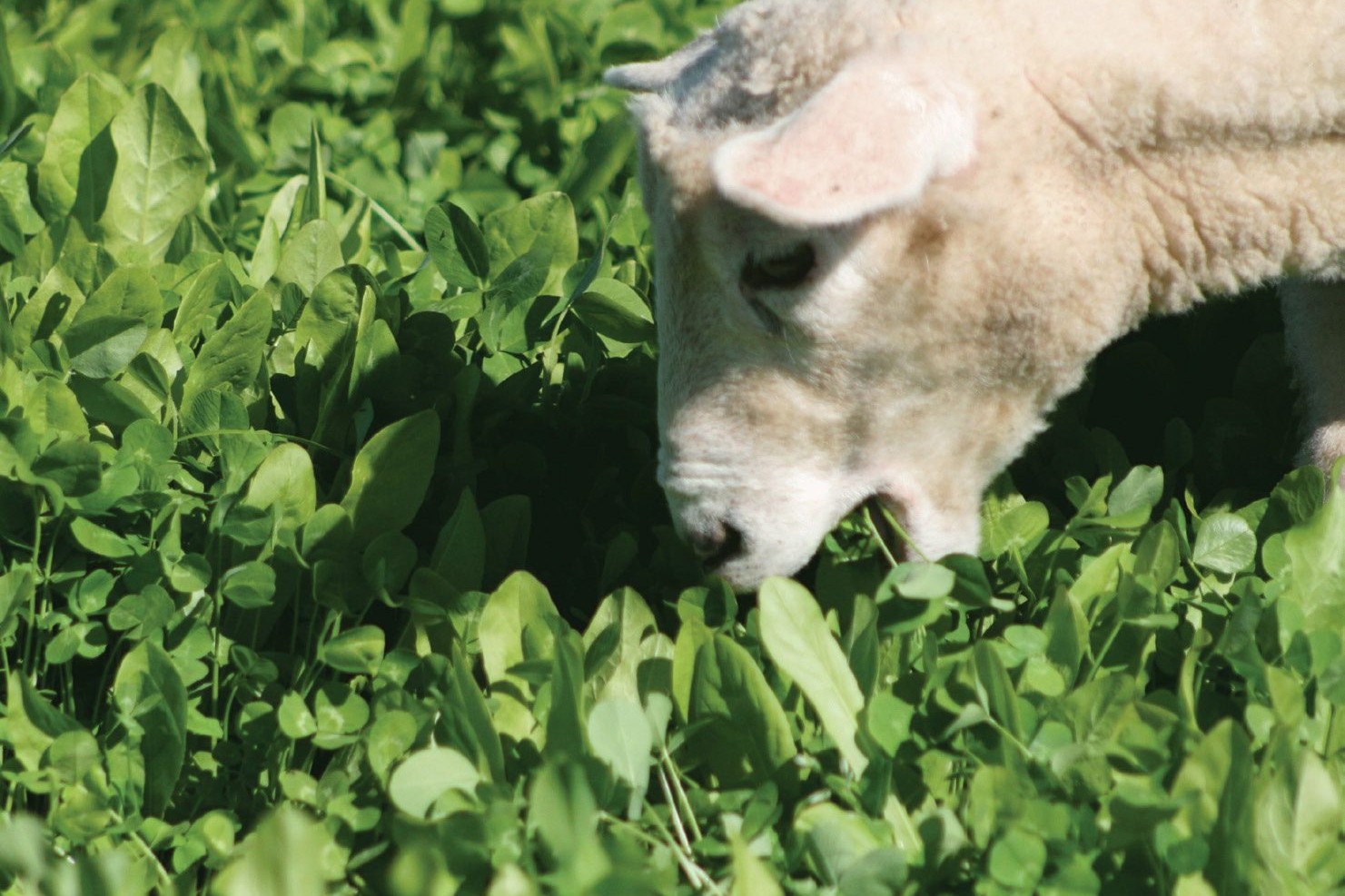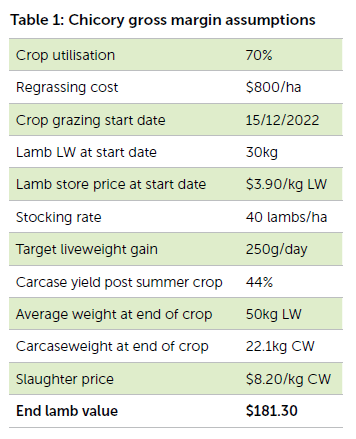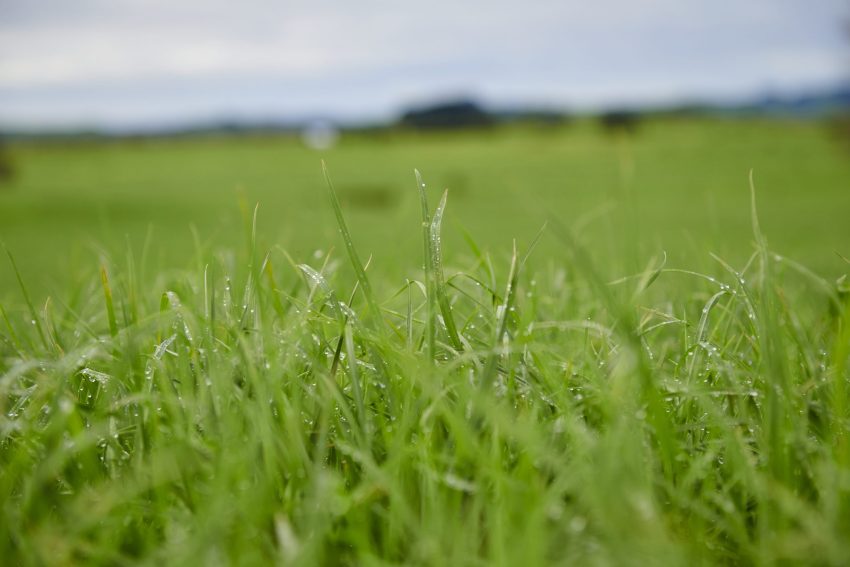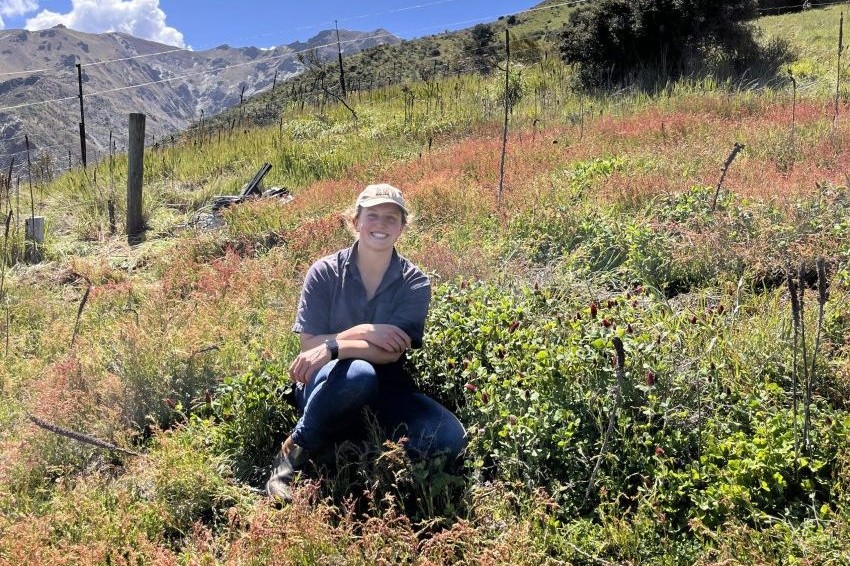Assessing feed crop profitability
Laura McQuillan-Reese reports on a profitability analysis of existing cropping systems.

Laura McQuillan-Reese reports on a profitability analysis of existing cropping systems.
Given the recent increases in seed, fertiliser, freight and contractor pricing, now is the opportune time to assess the profitability of cropping. In order to evaluate the profitability of cropping programmes, gross margins were completed for two different scenarios:
- A summer herb and clover mix for finishing lambs on.
- A winter kale crop for wintering R2 bull and a gross margin for the operation.

A summer herb and clover mix for finishing lambs on
The chicory legume mix is spring-sown when temperatures are 12C or rising. Typical sowing rates include 4-6kg chicory seed, 3-5kg white clover and 2-4kg red clover, at a total sowing rate of 9-15kg/ha.
Most seed retailers have a herb legume mix available for lamb finishing. The crop requires about eight weeks until first grazing, which is based on chicory development. Chicory needs to reach 20-30cm in height and have seven true leaves before grazing and shouldn’t be able to be pulled out of the ground.
To maintain chicory quality, the crop should be grazed over a 21 to 28-day rotation over a period of six months. Stocking rate is important. Depending on yield, the crop could support 40-50 lambs a hectare.
Overgrazing will negatively affect the persistence of chicory and red clover, as the growing points of the plant are higher in red clover and you don’t want to cause damage to the chicory crown. Remove lambs when the crop is down to 7 or 8cm. Throughout the course of the grazing season, lambs should be regularly weighed and killed as they hit target weights.
This crop can be overwintered and grazed over a second season but increased grazing management is required to minimise chicory reproductive stem developing and affecting feed quality. Also consider the area where the chicory crop is and as it is unable to be grazed over winter and if that is possible for the farm system.
The chicory scenario was based on a stocking rate of 40 lambs/ha, with crop utilisation of 70%. The lambs started on crop on December 15 at a 30kg LW. Liveweight gain was 250g/day. Final lamb carcaseweight was 22.1kg and final lamb value was $181.30.
As shown in Table 2, based on the achievement of scenario assumptions, and if an increase of value of $64/head of lamb value is achieved, the chicory and legume crop has generated $823/ha of revenue after direct cropping costs.

Lambs are known to perform better on mixed sward crops over summer with increased carcase yields and higher growth rates. The chicory legume mix is versatile across a number of regions in New Zealand for drought tolerance, and adjusting the mix to suit your farm system will allow for best results.
Other examples of summer crops for lambs could be forage rape, raphanobrassicas, lucerne, pure clover swards and high sugar ryegrasses (summer safe or irrigated areas only).
The profitability of the chicory crop decreases to $23/ha after regrassing, although some may not consider that a crop cost. With appropriate grazing management practices (excluded from rotation in winter), the longevity of the chicory/legume stand can be increased to two-three years.
Depending on the requirements of your system, added productivity from a pasture renovation perspective may be more valuable; or the farm may have capacity to let the chicory paddocks rest over winter, diluting the regrassing cost. This is an important factor to consider for a farm owner or manager considering a summer crop like a herb and legume mix.
It is important to remember that with chicory, after the vernalisation period in winter, the crop rapidly shoots into the reproductive development stages in summer, therefore shortening rotations and keeping on top of stem growth is important. Once the reproductive stem appears, the lignin content in the plant increases and nutritional value of the crop is decreased.
Potential ways to increase profitability of a summer crop include:
- Thinking about increasing efficiency of tractor requirements – could direct drilling be sufficient
- Extending longevity for an extra grazing or keeping for an extra season.
- Buying cultivars that are better for pest resilience and growth rates with lower inputs required
- Incorporating legumes which fix nitrogen to reduce the requirement for N fertilisers.
- Good animal health and grazing management practices to ensure lambs are achieving optimal lamb liveweight gains.

Kale crop for wintering R2 bulls
Kale is sown in late spring/early summer, depending on soil moisture conditions, and the targeted grazing period. Kale maturity, and therefore grazing, is possible from 120-150 days post-planting (between May and August). The expected yields for a range of kale crops is 8 to 17t DM/ha, largely influenced by cultivar grown.
The gross margin for the kale scenario assumed 70% utilisation, with a stocking rate of eight bulls/ha. With feed demand of 2.8% of liveweight fulfilled by 80% crop and 20% silage, this gave available grazing of 107 days. The value of bulls was determined by store value before crop and store value after crop in order to capture the value of the crop on its own.
At an end store price of $3.30/kg LW, Table 4 shows the gross margin at completion of grazing was $1249/ha (excluding regrassing). To breakeven, the equivalent store price at completion of crop would need to be $3/kg LWT. Traditionally we see more than a 10 cent/kg increase in bull value over this time period. When regrassing is included in the cropping cost, the breakeven store price value at crop grazing completion was closer to $3.30/kg.
When considered on the wider scale of a bull beef finishing system, the growth achieved during the winter on crops should be targeted in order to have bulls ready for slaughter in early summer. Where bulls do not achieve appropriate LW gain targets on crops, this results in decreased profitability exacerbated by having to keep feeding over summer to finish or being sold store lighter. Key management decisions such as ensuring accurate crop yield measurement and feed allocation to ensure target liveweight gains are met, increases the level of success in these wintering systems.
There is less flexibility with winter cropping than there is with the likes of a summer crop for lambs. Correct crop husbandry from the beginning is key to maximise productivity and success. Timing of sowing is important to ensure that the plant gets enough sunshine hours to rapidly accumulate biomass in summer months.
Utilising minimal tillage or direct drilling, rather than full cultivation decreases tractor hours and cost. Also target strategic fertiliser applications by talking with a trusted consultant to maximise growth and development of the kale crop. The fertiliser should coincide with the appropriate soil moisture levels and forecasted rain.
It is important to manage winter crops to minimise environmental effects and protect animal welfare. Increasingly, consent applications and compliance costs could further challenge the profitability or feasibility of winter cropping systems.
There is absolutely a place to incorporate cropping into farm systems and these crops contribute to profitability on sheep and beef farms, despite the concerns with increasing costs. Crops increase the resilience of a grass-based farm system and can provide high quality forage during periods of little to no grass growth.
Getting good advice about how to maximise a cropping option in the farm system is the first place to start. Ensure the money spent is making the profit that you need it to.
- Laura McQuillan-Reese is a consultant with Perrin Ag, Rotorua.




